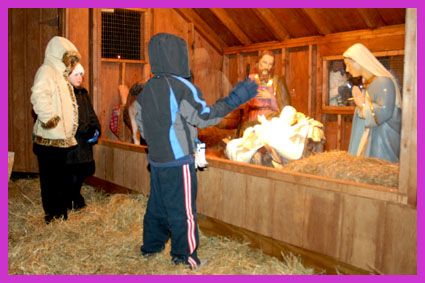Welcome! I hope you are having a wonderful first week of Advent!
Last Friday, the Catholic Labor Guild had its annual Cushing-Gavin Awards
Banquet during which those involved in the field of labor-management relations are recognized. There were 1,200 guests at this very important Boston event.
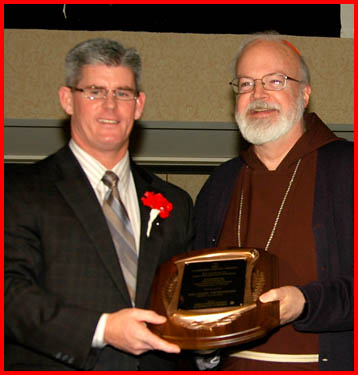
The Labor Award was given to Michael Monahan
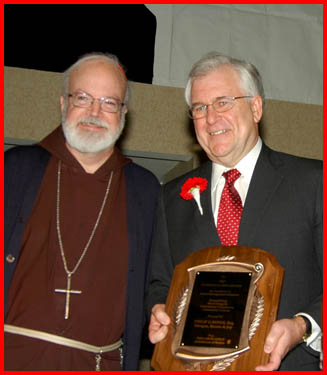
The Labor Law Award went to Phillip Boyle
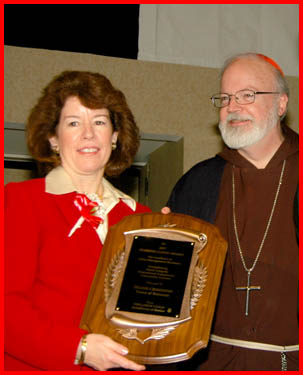
The Management Award recipient was Diane Crimmins
The Auxiliary Award (which has been renamed the Boyle Award) was given posthumously to Father Ed Boyle, the guild’s chaplain for 27 years who passed away on Nov. 13.
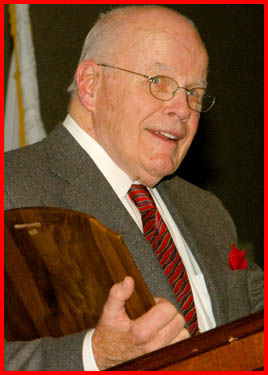
Father Boyle’s brother, Jack, accepted it on his behalf
Father Boyle, a Jesuit priest, gave over 34 years to being a labor priest and working in the realm of social justice, particularly with labor unions and management. He was so dedicated to the social gospel of the Church and touched many, many lives.
I saw him at Campion Hall, the Jesuit retirement home in Weston, just a few weeks before he died, and we had a wonderful visit. Thousands of people turned out for his wake and funeral. Many members of his family were at the wake as well, and I was able to meet them and thank them in the name of the Catholic community for all that Father Ed meant to us and all of his fine work over the years.
Father Ed had composed a farewell speech that was read at the dinner. It was a very moving appeal to people to become involved in these social justice issues.
We know that the wonderful legacy of Father Ed will continue in the Catholic Labor Guild. I was happy to be at the dinner so that I could thank the president of the board, congratulate the honorees and especially to say a word of profound gratitude to the ministry of Father Ed Boyle and to publicly acknowledge the presence of his family at the banquet.
– – –
On Saturday I had Mass at St. Bonaventure Parish in Plymouth, followed by the blessing of their new life-size nativity scene. St. Bonaventure’s has a wonderful community, fantastic choirs and many young families. The Mass was standing-room only.
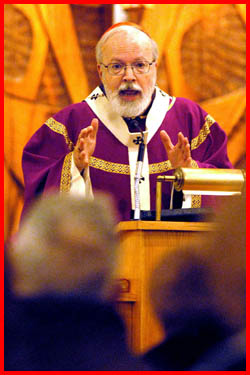
Afterwards, we had the ceremony outside to bless the crèche and the Christmas tree. Readings were proclaimed and carols were sung by the choir. It was a very, very cold night, but virtually the whole congregation stayed for the blessing, and the pastor obviously was very, very pleased to see the response.
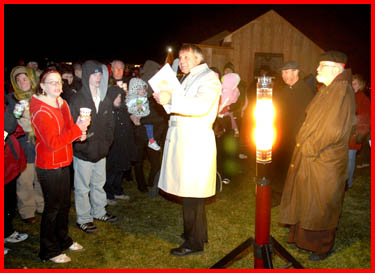
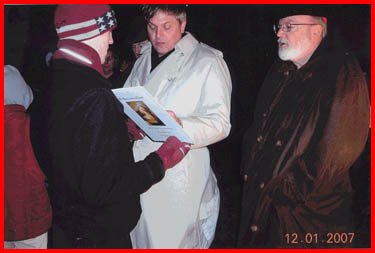
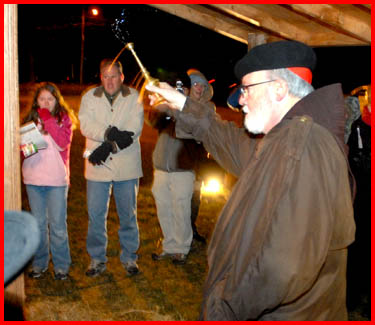
They have acquired a beautiful nativity scene, made in the Philippines. The figures are magnificent. In fact, it is one of the most beautiful crèches I have ever seen. They had built three gazebos in which different parts of the nativity scene are placed behind protective glass.
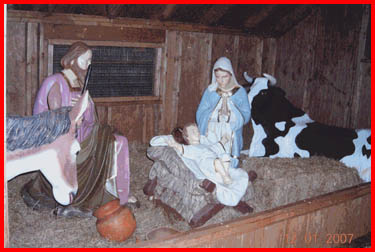
In Plymouth there is no crèche on public land, but the parish’s response was, in effect, “Well, we can’t be criticizing the public authorities if we don’t have one ourselves.” So they put up this beautiful display so that children and adults would be reminded of what this season is all about.
– – –
And, of course, We began our observance of the 200th anniversary of the archdiocese with a special Mass at the Cathedral of the Holy Cross on the first Sunday of Advent. It was very well-attended, with many priests, deacons, religious and faithful representing all the parishes.
The choirs represented the diversity of our archdiocese with the Cathedral Brass Ensemble, the Cathedral Hispanic Choir, the Cathedral Festival Choir and different parish choirs representing the Brazilian, Haitian, Kenyan, Korean and Vietnamese communities.
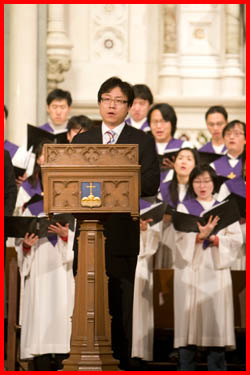
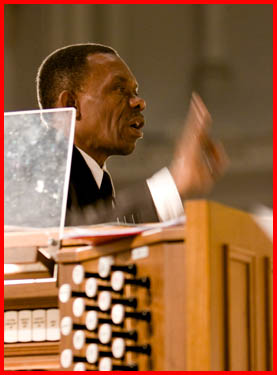
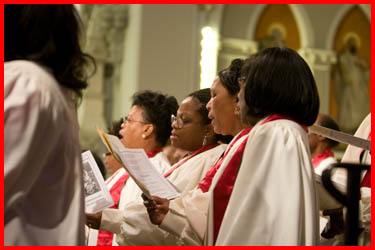
The Mass was televised on CatholicTV, although the live feed had some difficulties with the audio. I understand the rebroadcast went better!
I found out about the first broadcast after the Mass. While I was greeting people at the doorway of the cathedral, one lady came up and said, “Bishop, I was watching on television, but I couldn’t hear anything, so I got in my car and drove down.”
If you still haven’t had a chance to watch one of the rebroadcasts, you can watch it on the CatholicTV web site by clicking here.
During this bicentennial year, there will be a number of events. One very important initiative is “Arise: Together in Christ,” a program prepared by Renew International that is the cornerstone of our celebration. We are also planning to create a new diocesan Web page in the upcoming year, and there is already a site for the bicentennial at www.Boston200.org. News and information about all the events happening throughout the archdiocese will be posted there.
We are very grateful to Father Bob Connors and the rest of the Bicentennial Committee for all their hard work.

Father Bob Connors addressed the congregation at the end of the Mass
I’d like to share with you the homily I delivered at the Mass. (If you’d like to listen to a multimedia presentation of it, you can simply click here.)
Good afternoon everyone. Welcome to all of you and to my brother bishops. We are very pleased to have also with us Bishop Robert Muhiirwa, a bishop in Uganda who is visiting. We are happy to welcome so many of our brother priests and deacons, fellow religious, brothers and sisters in the Lord and those who are home watching us, thanks to Catholic Television. Today, we inaugurate our bicentennial celebration in the archdiocese — “Journey Together in Christ” is the theme and apt description of the Church’s life. I want to express my thanks to Father Bob Connors and the Bicentennial Committee for all its hard work that is coming to fruition beginning with this opening Mass and the parish Advent missions this week. Welcome all to this Cathedral of the Holy Cross.
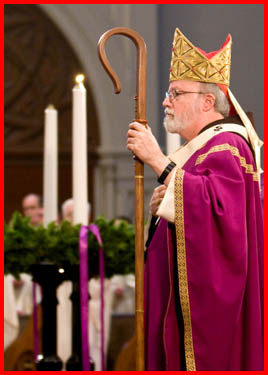
As a young priest, one Saturday in December in the early ‘70s, I was in the sacristy at St. Matthew’s Cathedral waiting for a wedding. My weddings were always notoriously late. Suddenly, the young bride appeared in the doorway, looking lovely in her white gown and her veil. But I could see that she had been crying. I asked, “What’s the matter?” She said, “Father, there’s not going to be any wedding. My fiancee is in Buffalo, N.Y., and there’s six feet of snow there. Father, please inform the people in church that there will be no wedding.” So I went to the pulpit and I announced that there was not going to be a wedding. There was an audible gasp from the congregation. But then I told them that they were to go to the restaurant for the reception. That the band and the food were waiting. They all trotted off and had a grand time.
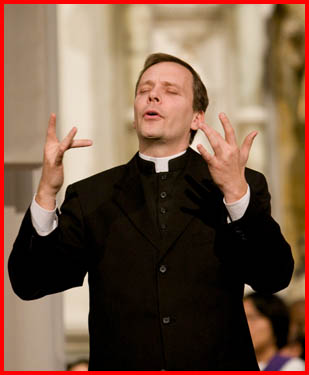
Later that day, I was reflecting on the strange turn of events. And because it was Advent, I thought, “Christmas has become like that wedding.” We have the lights and the music and the food and the parties and the gifts and the Bridegroom is in Buffalo. Advent needs to be about bringing the Bridegroom back to the party at Christmastime. By making this time of spiritual preparation a time of more intense prayer, a time for confession, a time for works of mercy, reconciliation in our families and communities. A time to listen to the Bridegrooms’ call to be vigilant and awake. Yes, Jesus is the Bridegroom, he is never the widower. He does not exist separate from the bride, his Church. He loves us so much that he became a part of our human family and he laid down his life for our salvation. And yes, he calls us to journey together with him.
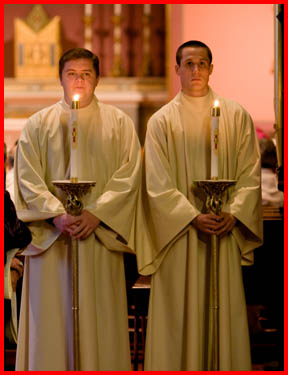
For our local Church, an important part of the journey began 200 years ago, when we were established as a diocese, as the local Church of Boston. Advent is a time when, in the Church, we look back and we look forward. We look back to the first Christmas. It’s like opening the family album to look at the baby pictures and rejoice that our Redeemer has come into the world. But Advent is also about looking into the future to the second coming of the Lord — about living with a sense of expectancy and urgency.
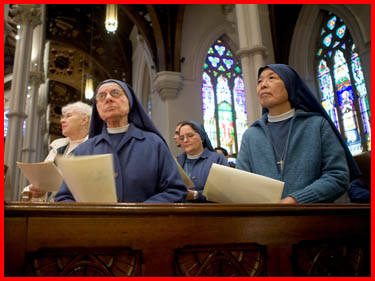
As we begin our bicentennial, we too, look back with a sense of profound gratitude and look forward with the hope that Pope Benedict describes for us in his new encyclical, “Spe salvi.” Sometimes we rhapsodize about the past, glamorize history and remember only what is pleasant. As a Catholic community in New England, we should know that our beginnings as a local Church were fraught with hardship and hostility and with enormous sacrifices.
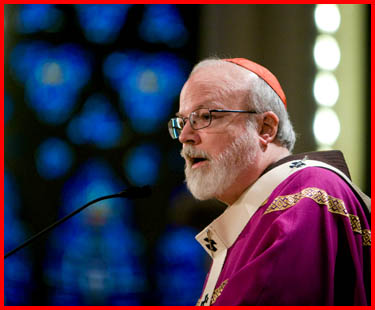
In the good ol’ days, here in Boston, there were laws that were very anti-Catholic. Priests were not allowed into this colony. If a priest were to be found, he was to be banished. If he returned, he would be executed. And each year, as people sang, “Remember, remember, the 5th of November,” the pope was burned in effigy on the Boston Common. I am sure that those early residents of the Bay State would be horrified if they had known that Pope John Paul II would one day come to the Boston Common and celebrate the Eucharist there for about 400,000 people.
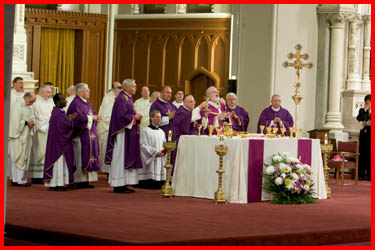
Yes, 200 years ago, it was not easy to be a Catholic in America. The Jesuit order had been dissolved because of political pressures. The former Jesuit, Father John Carroll was appointed the first bishop of Baltimore in 1787 by Pope Pius VI. The pope was a prisoner of Napoleon at the time and died in captivity. The conclave to elect his successor was held at a Benedictine Monastery in Venice, since the cardinals were not safe in Rome. On March 21, 1800, Pius VII was elected pope. Pius VII was the pope who established the dioceses of Boston, New York, Philadelphia and Barnestown in 1808. That same year, Napoleon conquered the Papal States and kidnapped the pope, who was prisoner for six years. In those days, the entire Catholic population of the diocese would not have filled this church. There were about 1,000 Catholics and two priests.
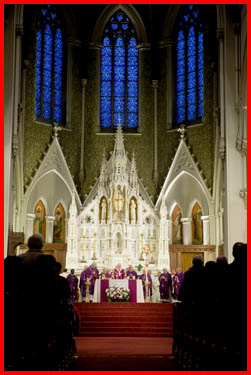
Most of the Catholics were working-class Irish and their priests were two Frenchmen, Father Matignon and Father Cheverus — who became our first bishop. He was of French nobility, the “noblesse de robe.” He was baptized Jean-Louis Anne Madelain Lefebvre de Cheverus. He was tonsured when he was only 12 years old. After his ordination in 1790, he worked with his uncle, who was a priest, for two years. And then, he was placed in a concentration camp because he refused to take the obligatory oath that the revolution imposed on all the clergy and that would have caused him to have to betray the Catholic Church and his priestly vocation.
Father Cheverus escaped to England where he learned English, worked as a teacher and ministered to other French refugees there. He came to Boston at the invitation of Father Matignon who had been his seminary professor. Father Cheverus was an extraordinary priest. A holy pastor of souls, who spent much time in Maine working with the Indians, as well as in Newburyport, and in Plymouth. He was beloved by Catholics and Protestants alike. And in God’s providence, he was named the first bishop of Boston.

Those handful of Catholics of two centuries ago, have grown to over 5 million Catholics in New England today. We can sing with pride Fabers’ hymn “Faith of our fathers living still, in spite of dungeon, fire and sword.” As we look back, our hearts must be filled with gratitude and admiration for the priests, the religious, the laity that have gone before us, marked with a sign of faith. The parishes, the nursing homes, the schools, the hospitals, the agencies, the social services, the organization. The many who collaborated with the Church’s mission and the universal Church as priests in the military service. Over 300 who have served in the St. James Society. Those from Boston, who founded Maryknoll. The countless religious, including our own Sisters of St. Joseph, the Notre Dame sisters who staffed so many countless schools. The five convents of contemplative sisters here, praying for the needs of the Church. Our two seminaries, and the countless faithful Catholic laity, who have made so many sacrifices for their Church. And so courageously and quietly witnessed to their Catholic faith and family life. For the priests and deacons and catechists in our parishes, our unsung heroes. Today, for all of these blessings of 200 years, we say, “Thank you, Lord.”
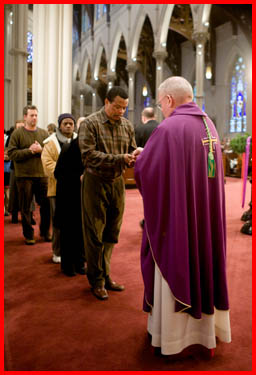
The Advent readings remind us that we must press on to the future. With hope, but also with a great sense of the urgency of the Gospel. St. Paul tells us, “It is the hour for us to wake from sleep, for our salvation is nearer now, than when we first came to believe.” Jesus tells us to be prepared for the coming of the Son of Man. He uses the image of Noah’s ark. He says, just as some people were caught up in the routine of their daily lives, so today, we must be aware of allowing ourselves to be so distracted by the demands of each day, as to miss the moment that the Lord offers to us. To literally miss the boat, as those people did in Noah’s day. The father’s of the Church use the ark of Noah as a metaphor for the Church.
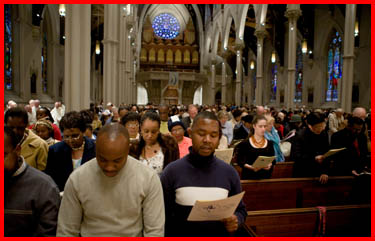
Last year, when I spoke to the [Boston] Men’s Conference participants, I said, “the Church is like Noah’s Ark, a floating zoo.” Some people have jumped ship, others are seasick. Some are rowing in one direction and others in another. What we must never lose sight of, is that Jesus Christ is the captain of the ship. And he is summoning us, “All hands on deck.” Every baptized Catholic must know that we have a personal call to holiness, to a vocation to be part of Christ’s mission — “All hands on deck.” The ark reminds us that we have been reborn in the waters of baptism. Those waters have made us part of Christ’s family. But we are truly his brothers and sisters, when we obey the will of the Father.
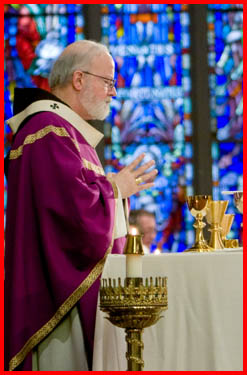
Last week, Mary Ann McLaughlin was addressing the Presbyteral Council about “Arise,” the Renew program for the archdiocese’s bicentennial celebration. She said, “It’s not easy to be a Catholic.” As we reflect on our history, we see that it has never really been easy to be Catholics, to be a disciple. Our religion is not to be an escape. An exercise in comforting the comfortable. It’s rather about discipleship. Taking up the cross each day with the confidence that love lightens the burden. That his yoke is sweet and his burden light.
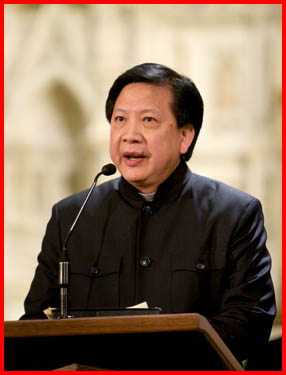
In the Scriptures, after Jesus’ arrest, Peter tried to follow Jesus at a safe distance, while Mary was standing next to Jesus’ cross with his blood splattered on her face and dress. And, as on the day of the annunciation, Mary was still saying “yes” in the face of the cross. We, too, must say “yes” in the face of the cross. We cannot follow Jesus at a safe distance. Discipleship means following the Lord up close. We cannot follow Jesus alone. We do so in the context of community, of the body of Christ, of his family. In the Holy Fathers’ new encyclical, “Spe salvi,” Benedict XVI underscores the social reality of salvation and points out how the Church Fathers see sin as the destruction of the unity of the human race. As fragmentation and division. The Tower of Babel, the place where the languages were confused, the place of separation, is seen to be an expression of what sin fundamentally is. As redemption appears, as the reestablishment of unity in which we come together once more in a union that begins to take shape in the world community of believers. The Holy Father rejects the narrowly individualistic interpretation of Jesus’ message.
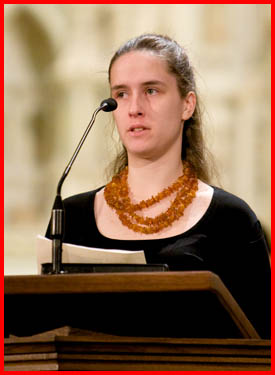
The Christian project is not a selfish search for salvation. It’s not “Jesus and me and the warm fuzzies.” It’s about serving others, about spreading the Gospel. We might feel more comfortable in our own lifeboat, but Jesus wants us on Noah’s Ark and it is, “All hands on deck.” It’s time to recommit ourselves to the mission that is entrusted to us, to witnessing to Christ’s Gospel, to passing on the faith, to building on a civilization of love.
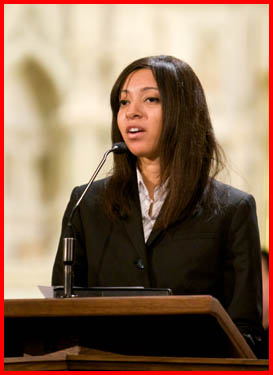
If some of our brother’s and sisters in faith have grown disillusioned and stepped away, then I invite them to come home. Noah’s Ark may have sprung a leak, but it is not sinking, and Christ is the captain. Like the Apostles, we may fear that the Lord is asleep in the stern, but he assures us of his loving presence, especially during the stormy night. To our brothers and sisters in the life rafts, I say, “We love you, we want you to return to the practice of the faith, to the faith of our ancestors, the faith of the saints, the faith of the Apostles.” Is it going to be easy? No. Will the Globe say nice things about us? No. No, it will not be easy, but it will be good.
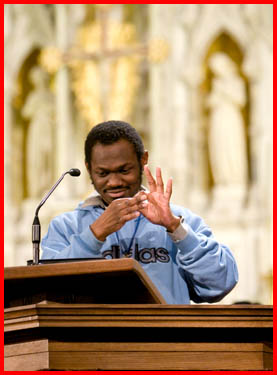
The first 200 years of the Church here in Boston have not been easy, but they have been good. They have been good because, despite our sufferings, despite our sins, despite our failings, despite our humiliations, the grace and love of God has always been with us. The faith and the prayers of countless people, living their baptismal commitment to Christ and to his body, the Church, has never been absent. Many hidden, anonymous, but there, like the elderly, the Simeon’s and the Anna’s of today, braving the cold and the darkness of the winter to be at daily Mass. The sick and the homebound, who pray the rosary with BCTV and offer their pain and loneliness as a sacrifice of atonement for our sins and as a vote of sacrifice for our young Catholics, their grandchildren. How many St. Monica’s pray for the return of a family member who has drifted away or stormed off to a self-imposed spiritual exile. Yes, it is not going to be easy. But it will be good. We are journeying together with Christ, Emmanuel, God with us.
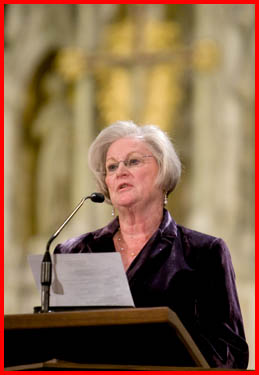
When I was a child, my dad used to go and buy the Christmas tree, just a few days before Christmas. By then, they’re all pretty much picked over and he would bring home a rather scrawny tree with big gaps in the foliage. Then, he would drill holes and stick branches into those holes so there would be someplace to hang the ornaments. But it was still a pretty paltry Christmas tree. But as children, we were much more interested in what was beneath the tree — the electric train and the presents. Then I went to the seminary. It was a German seminary, St. Fidelus of Sigmaringen. It took me six months to learn how to pronounce it. At Christmastime, they felled a forest. There was a tree in every room. And in the chapel, one entire wall was covered with pine trees. The smell was exhilarating. For the Germans, the “Tannenbaum,” the Christmas tree, is certainly a strong Christmas symbol. For the Italians, it’s the crèche, the “presepio.” After all, the patron saint of Italy is St. Francis of Assisi, who invented the practice.
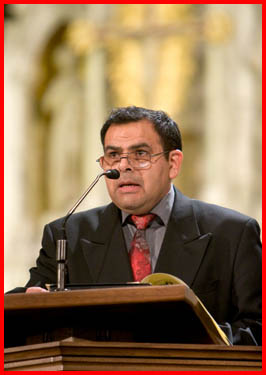
For the Irish, the most powerful Christmas symbol has been the candle, placed in the window. It was lit by the youngest member of the family and could be extinguished only by someone named Mary. I don’t have to tell you that there’s no shortage of Irish girls named Mary. The candle in the window in an Irish home had two meanings. It was a sign of welcome to the Holy Family, of Mary and Joseph looking for a place in the Inn. It was also an invitation during the times of persecution, to a priest to come and celebrate a clandestine Christmas Mass for the family. It was worth risking everything to be able to have the Eucharist.
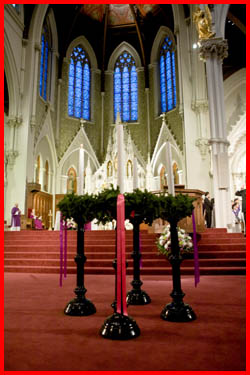
Today, as we begin our bicentennial celebration, I am here to say that in Boston, the candle is in the window. We want to invite and make welcome our brothers and sisters, especially the alienated. Especially the poor and the newcomers. We are always an immigrant Church. In the past, they came from Europe, from the Old World. Today, they are coming from the Caribbean, from Brazil, from Asia, from Africa, from Central America and even some from Rhode Island.
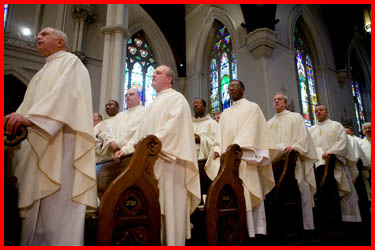
Yes, the candle is in the window. As our ancestors who refused to take the soup, and who risked their lives and fortunes to go to Mass, we profess and believe that God’s love for us is so great he has made a gift of himself to us in the Eucharist. Yes, the candle is in the window, because Christmas is Christ’s Mass.
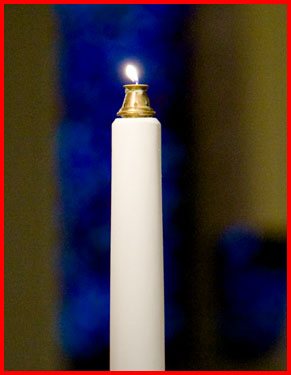
The Eucharist gathers us, as Christ’s family, to be united in the teachings of the Apostles, in fellowship and in prayer, and in the breaking of the bread, sharing what we have so that no one will be hungry. Not materially hungry, not spiritually hungry. The urgency of the Gospel today bids us, “Gather faithfully each week, as a worshiping community.”
The stakes are high; it is a matter of life and death. The branches need the vine. We need to be nourished by Christ’s words and by his sacrament. And we need to be nourished by the presence of the brothers and sisters of the household of the faith, the body of Christ, the Church. My brothers and sisters, as we journey together in Christ, let us put a candle in the window. A candle that says, “Welcome, welcome, welcome.” A candle that says, “The Eucharist is to die for.”
– – –
I meet several times during the year with newly ordained priests, and this week we met at St. Brigid Parish in South Boston. The Jesu Caritas meetings include Eucharistic devotion, a meal and shared reflection with the priests. They are always very well-attended by the young priests.
The theme this time was youth ministry and outreach to young adults. We told the priests about a new archdiocesan office set up around those ministries. Father Matt Williams, who has been doing so much in this area already, is going to be the director of the new office. We hope to bring together all the different groups that play a role in serving young Catholics, including high school chaplains and campus ministers, young adult and college campus ministry, youth ministry, CYO and scouting. We want the new office to have a close association with the vocations office and the marriage prep so that we can do the remote preparation with our young people.
– – –
On Thursday, I installed the new rector at St. John’s Seminary, Father Arthur Kennedy.
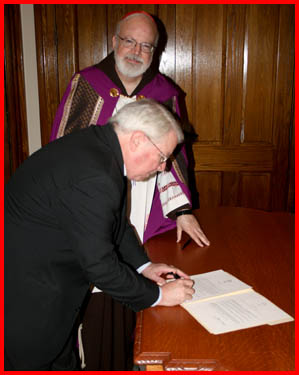
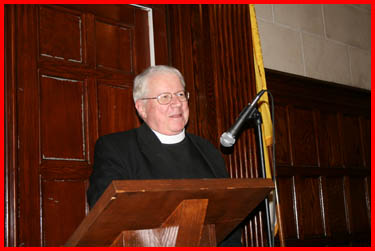
He came to us after many years of experience as head of the Catholic studies department at St. Thomas University in St. Paul and working in the area of ecumenism for the United States Conference of Catholic Bishops. He brings a set of skills and gifts that are proven to be a great blessing for St. John’s Seminary, so celebrating his formal installation is a time a great rejoicing for the diocese and the seminary community.
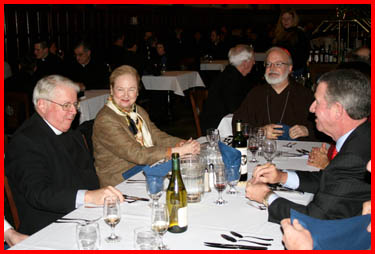
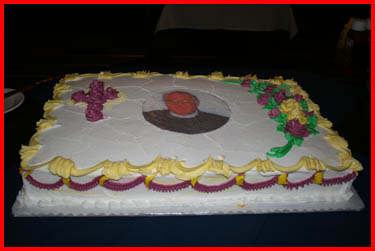
The numbers at the seminary have increased dramatically over last year’s. The spirit in the seminary is very good. We are very pleased, and the neighboring dioceses are beginning to have a greater sense of ownership and participation in life at the seminary, something we had been hoping for.
– – –
For my photo of the week I have selected the photo of the creché of St. Bonaventure Parish. It truly is spectacular. The parish is to be commended for their wonderful display.
